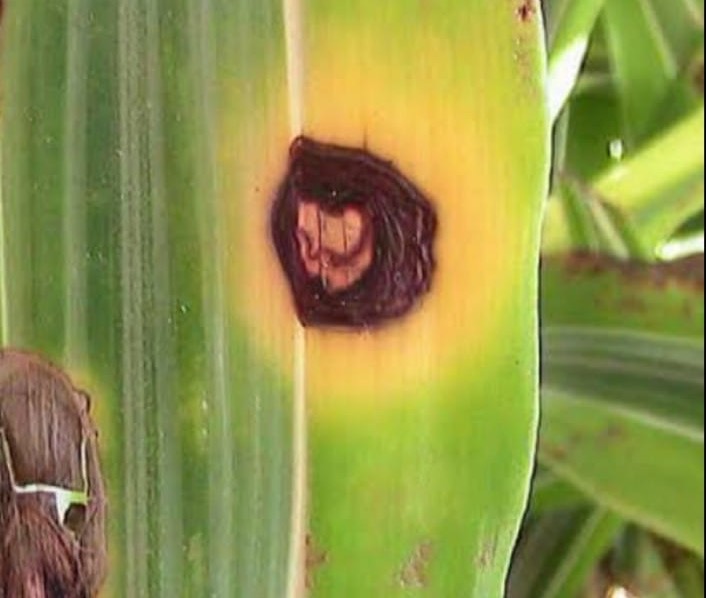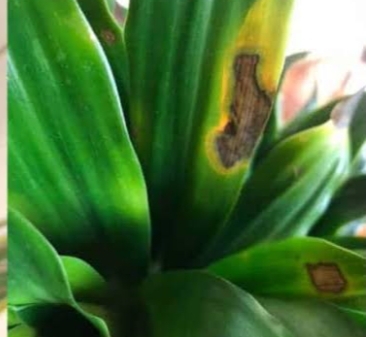Dracaena Plant
DRACAENA, possibly referring to Dracaena, is a versatile indoor plant. Provide well-draining soil and bright, indirect light. Allow the soil to partially dry between waterings. Prune as needed to maintain shape and remove any discoloured or damaged leaves.

Habit
Shrub
Height
50 to 150 cm
Growth
Moderate
Soil
Well Drained, Loamy
Shade
Indirect light to shade
Moisture
Moist
Edible
No
Medicinal
No
Origin
Africa
Climatic Condition
Tropical, warm
Temperature (°)
18 to 30
Humidity (%)
60 to 90
Potting media
Peat-perlite mix
Fertilizers
Organic fertilizers
Watering
Moderate
Plant Weight
200 to 800 g
Flowering Time
Rarely flowers
Soil Ph level
5.5 to 6.5
Water Ph level
6.0 to 7.0
Soil EC
0.4 to 1.2
Yield Per Plant
Ornamental
NPK ratio
10:10:10
life Span
Perennial
Health Benefits
Air purifier, improves indoor environment.
Suggested Grow Media or Potting Mix ?
50% peat moss, 30% perlite, 20% compost
Suggested Fertigation/Fertilizers
Fertilize every 4 weeks with a balanced fertilizer.
Common Diseases and Remedies
brown spot
Leaves turn yellow and roots get rot and smelly.
Avoid water logged conditions . Remove the effected part of the plant and destroy.
HEALTH BENEFITS
- Cleans Indoor Air: Filters out harmful chemicals like formaldehyde and carbon monoxide.
- Lowers Stress and Anxiety: Greenery in living spaces improves mental health.
- Boosts Productivity: Studies show indoor plants enhance concentration.
What Is A Dracaena Plant?
Dracaena is a popular ornamental plant known for its long sword-like leaves. It belongs to the genus Dracaena and includes several species commonly grown indoors, such as Dracaena marginata (Madagascar dragon tree), Dracaena fragranta (corn plant), and Dracaena reflexa (song of India). Dracaena is prized for its air purifying properties and relatively low maintenance.
What are the different types of dracaena plant?
1.Dracaena marginata (Dragon Tree):-
Known for its narrow, prickly leaves that often have reddish edges. It is popular as a houseplant because it is easy to care for and can tolerate low light conditions.
2. Dracaena fragrant (corn plant):-
Characterized by thick woody trunks and long arching green leaves with yellow stripes at the ends. It is also a popular ornamental plant and can grow quite tall if cared for properly.
3. Dracaena reflexa (Song of India):-
This variety has wide, glossy green leaves with a yellow or cream-colored stripe down the center. Because of its beautiful leaves, it is often used as an ornamental plant or for landscaping.
4. Dracaena sanderiana (Lucky Bamboo):-
Despite its name, Lucky Bamboo is not actually a bamboo, but a plant in the Dracaenaceae family. It is usually grown underwater and is said to bring good luck and prosperity according to Feng Shui principles.
5. Dracaena compacta (Dwarf Dracaena):-
Also known as Janet Craig compacta, this variety has dark green, glossy leaves that are compact and tightly packed. It is popular in offices and homes because it can grow in low-light conditions.

How to care for dracaena plant?
1.Location
Dracaena plants grow in bright, indirect light. Therefore, it is best to avoid direct sunlight and place it near a window with plenty of natural light. It can tolerate some shade, but may not grow as vigorously. They also like warmth and moisture, so keep them away from drafts and cold.
2. Sunshine
Dracaenas generally prefer indirect sunlight, as direct sunlight can burn the leaves. Place your dracaena near a window where it receives bright, indirect light for several hours a day. If the leaves turn brown or yellow, your plant may be getting too much sunlight. Therefore, place it in a slightly shaded area.
3. Soil
The soil for dracaena plants should be well-drained and slightly acidic. A mixture of peat moss, perlite, and a small amount of sand works well. This combination ensures good ventilation and moisture retention while preventing waterlogging that can lead to root rot. Additionally, dracaena plants prefer slightly acidic soil with a pH of around 6.0 to 6.5.
4. Hydration
Hydrating your dracaena plant means giving it the right amount of water to maintain its health and growth. Dracaena plants prefer slightly moist soil, but are sensitive to overwatering, which can cause root rot. Depending on environmental conditions, it's best to water the plant when the top inch of soil feels dry, usually every 1 to 2 weeks. Make sure the pot has good drainage to avoid water clogging. Additionally, using filtered or distilled water prevents the buildup of salts and minerals in the soil that can be harmful to your plants. Overall, consistent and moderate watering is the key to keeping your dracaena plant hydrated and growing.

5. Nourishment
Wait until the soil dries out a little between watering. Overwatering can cause root rot. Water generously when the soil surface becomes dry. Dracaena plants prefer bright indirect light, but can also tolerate lower lighting conditions. Avoid direct sunlight as it may cause leaf burn. Keep the plant temperature between 18 and 27°C. They are sensitive to cold drafts. Dracaenas prefer medium to high humidity. You can increase humidity by misting the leaves or placing the plant in a tray with pebbles and water. Feed plants every 2 to 4 weeks during the growing season (spring and summer) with a balanced liquid fertilizer diluted to half strength. Reduce the frequency of fertilization in autumn and winter.Cut off brown or yellow leaves to keep the plant healthy. Once established, dracaenas are usually repotted every two to three years. Please use well-drained potting soil.
What are the benefits of dracena plant?
Overwatering: May cause root rot. Make sure the soil is dry between watering. Very hardy, but leaves may turn brown and droop if the soil continues to dry out. Common pests include spider mites, mealybugs, and scale insects. Check your plants regularly for signs of infestation. Dracaenas prefer medium to high humidity. Brown leaf tips may indicate low humidity. Dracaena prefers constant temperature. Do not place it near drafts or air conditioning vents.

FAQS about growing dracaena plant
1.What are the care requirements for a dracaena plant?
Dracaena plants thrive in indirect sunlight and well-draining soil. Keep the soil consistently moist, but not soggy, allowing the top inch to dry out between waterings. Maintain humidity by misting the leaves or placing the pot on a tray of pebbles with water. Regularly dust or wipe the leaves to keep them clean. Prune dead or yellowing leaves to encourage new growth, and fertilize lightly during the growing season. Avoid exposing the plant to drafts or extreme temperatures.
2.What kind of light does a dracaena plant need?
Dracaena plants generally prefer bright, indirect light. They can tolerate some lower light conditions, but too much direct sunlight can scorch their leaves. Placing them near a window with filtered sunlight or in a well-lit room should provide the right amount of light for healthy growth.
3.Can dracaena plant be propagated and if so, how?
Can Dracaena plants be propagated? If so, how can they be propagated? Place them about a centimeter long in water or soil until roots develop. Make a small cut in a healthy stem, wrap in moist peat moss and cover with plastic wrap until roots form. Some varieties of Dracaena produce branches at the base of the plant that can be carefully separated and planted individually. For large Dracaena plants, you can divide the root ball into smaller sections to ensure each section contains roots and leaves. Propagation success often depends on factors such as the health of the mother plant, proper care of the propagated cuttings, and environmental conditions.
4.How often should I water dracaena plant?
Dracaena plants generally prefer to dry out slightly between waterings. You should water your Dracaena plant when the top inch or so of the soil feels dry to the touch. Depending on factors like humidity, temperature, and the size of the plant, this typically means watering every 1-2 weeks. Overwatering can lead to root rot, so it's important not to water too frequently.
5.Are there different varieties of dracaena plants, and how do they differ in care needs?
Yes, there are several varieties of Dracaena plants, each with its own unique characteristics and care requirements. Some common varieties include Dracaena marginata (Madagascar dragon tree), Dracaena fragrans (corn plant), Dracaena sanderiana (lucky bamboo), and Dracaena deremensis (Janet Craig).Their care needs generally involve providing bright, indirect light, regular watering (allowing the soil to partially dry out between waterings), and occasional fertilization during the growing season. However, specifics can vary depending on the variety, so it's best to research the particular needs of the variety you have or plan to get. For example, some varieties are more tolerant of lower light conditions, while others prefer more sunlight. Additionally, some may be more sensitive to overwatering or require different humidity levels.




